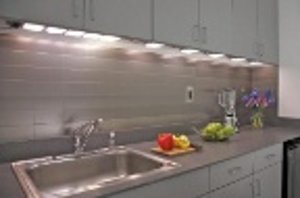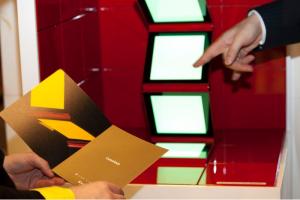UDC announces Stacked-OLED lighting panel advances
Universal Display announced advances in their white OLED lighting panels. The new panels use a Stacked-OLED (SOLED) architecture and exceed the DOE's commercial panel target of 10,000 hours (at an initial luminance of 3,000 cd/m2) by more than 20%. The panels are 15x15cm2 in size and feature 90,000 liftimre (D70), 55 lm/W efficiency and a CRI of 86. A stacked-OLED provides better lifetime, but has more layers and is more difficult to manufacture.

The company also showcased an all-phosphorescent, white OLED luminaire designed into an under-cabinet lighting system. This development was funded in part under a DOE Solid State Lighting program back in 2009. The warm-white OLED offer a power efficacy of 70 lm/W when operated at 190 lumens (~1000 cd/m2), and 61 lm/W when at 420 lumens (~2200 cd/m2). The panels operate at a low voltage of ~4 V.










